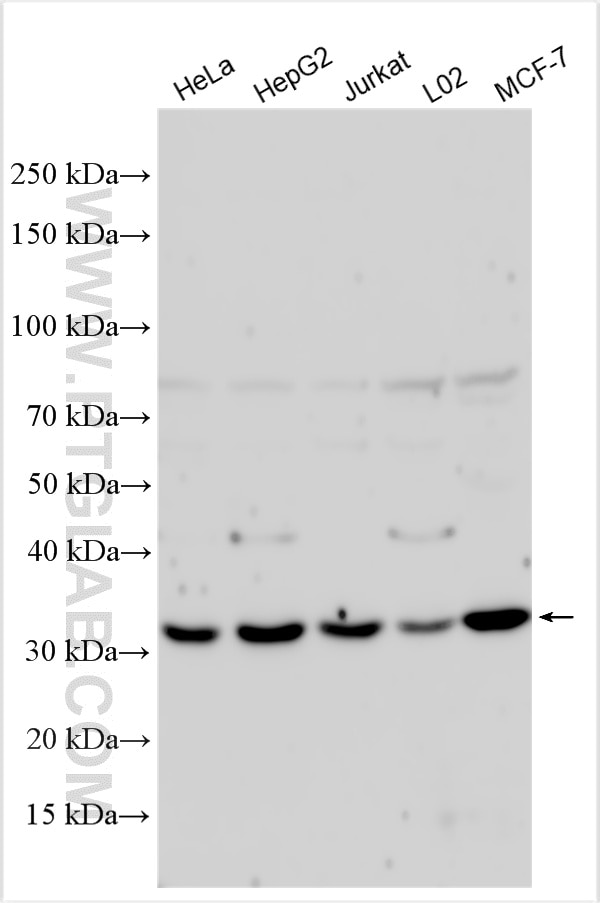Tested Applications
| Positive WB detected in | HeLa cells, HepG2 cells, Jurkat cells, L02 cells, MCF-7 cells |
Recommended dilution
| Application | Dilution |
|---|---|
| Western Blot (WB) | WB : 1:500-1:3000 |
| It is recommended that this reagent should be titrated in each testing system to obtain optimal results. | |
| Sample-dependent, Check data in validation data gallery. | |
Product Information
17132-1-AP targets PNAD in WB, ELISA applications and shows reactivity with human samples.
| Tested Reactivity | human |
| Host / Isotype | Rabbit / IgG |
| Class | Polyclonal |
| Type | Antibody |
| Immunogen | PNAD fusion protein Ag10880 Predict reactive species |
| Full Name | N-terminal asparagine amidase |
| Calculated Molecular Weight | 310 aa, 35 kDa |
| Observed Molecular Weight | 30-35 kDa |
| GenBank Accession Number | BC017336 |
| Gene Symbol | NTAN1 |
| Gene ID (NCBI) | 123803 |
| Conjugate | Unconjugated |
| Form | Liquid |
| Purification Method | Antigen affinity purification |
| UNIPROT ID | Q96AB6 |
| Storage Buffer | PBS with 0.02% sodium azide and 50% glycerol , pH 7.3 |
| Storage Conditions | Store at -20°C. Stable for one year after shipment. Aliquoting is unnecessary for -20oC storage. 20ul sizes contain 0.1% BSA. |
Background Information
PNAD is an N-terminal aspartic acid deamidation enzyme, which can deamidate N-terminal aspartic acid residues to aspartic acid, making the protein prone to arginination, polyubiquitination and degradation. In addition, PNAD is involved in the regulation of apoptosis by mediating the degradation of the C-terminal fragment of Drosophila apoptosis suppressor protein 1.
Protocols
| Product Specific Protocols | |
|---|---|
| WB protocol for PNAD antibody 17132-1-AP | Download protocol |
| Standard Protocols | |
|---|---|
| Click here to view our Standard Protocols |



